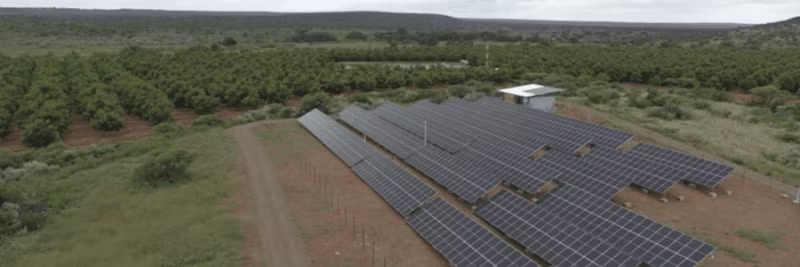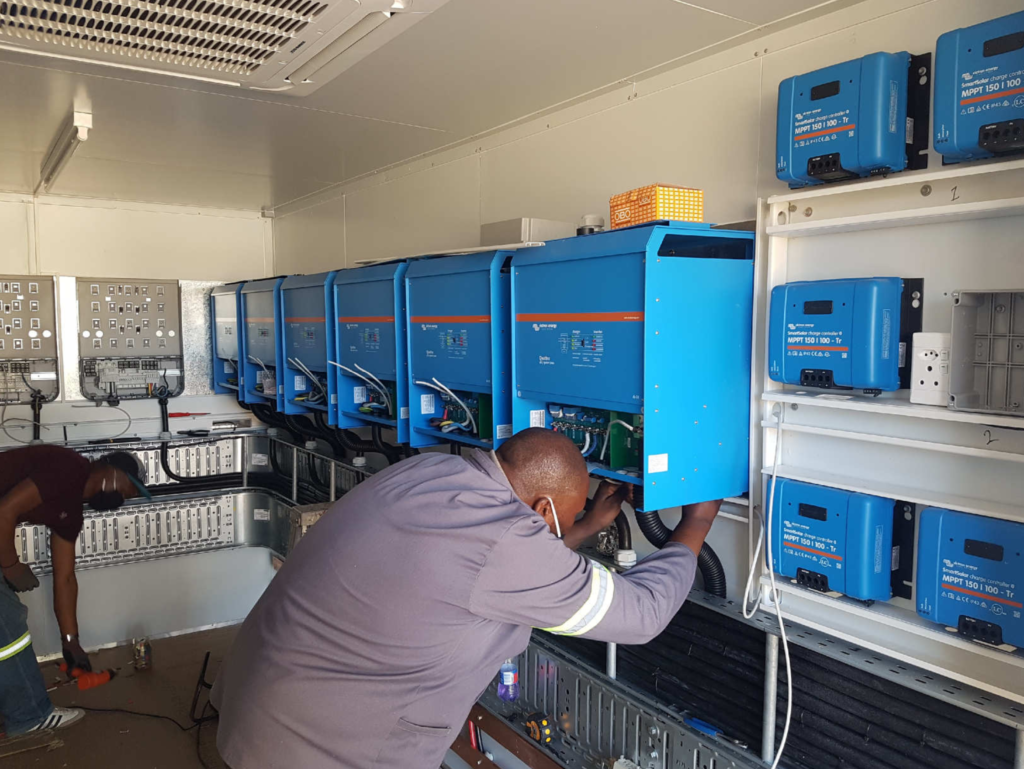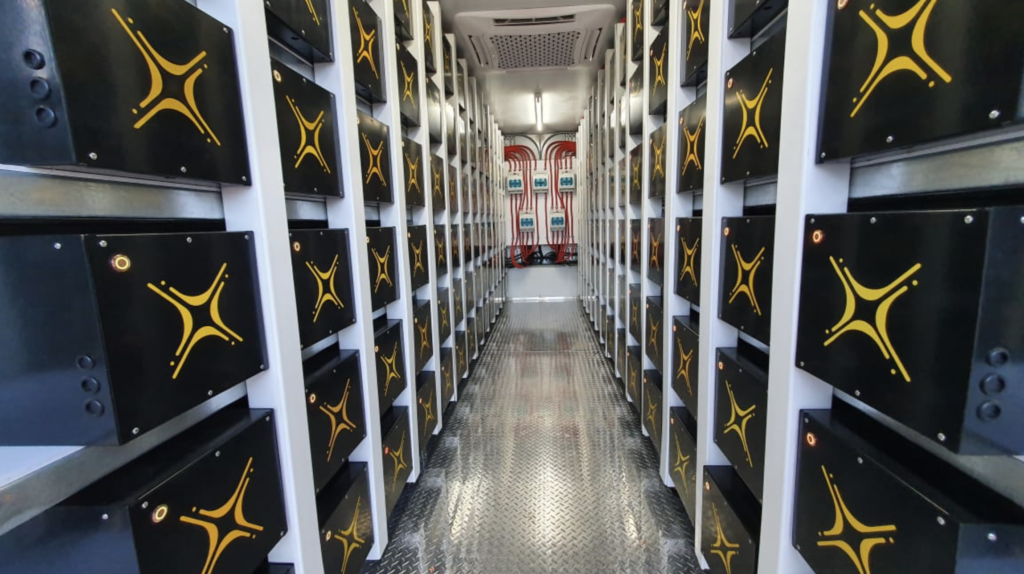Varukorg
Rabatt: 0,00 SEK
Rabatt: 0,00 SEK
Justin, Victron Energy |29/03, 2021

En 180 hektar stor pekannötsodling i Hartswater, Sydafrika har löst sitt bevattningsproblem över en natt genom att installera regionens största off-grid solcellsanläggning med lågspänning.
Problemet var inte tillgången till vatten – 1200 km kanaler från Vaalharts bevattningssystem levererar det vatten som behövs. Utmaningen låg i det instabila elnätet med återkommande strömavbrott och överbelastning. När strömmen går förloras vattenleveranser, vilket leder till ekonomiska förluster och risk för skördeskador.
Hartswater Pecan Plant investerade i privat energiförsörjning med hjälp av Ecotrades Solar Power Systems. Lösningen består av två separata infrastrukturer för att undvika spänningsfall i det 4,5 km långa kabelnätet.

Systemet förinstallerades i fyra isolerade, luftkonditionerade containrar – två för batteribanker och två för växelriktare – innan transport till platsen med Ecotrades egna kranbilar.
Installationen omfattar 336 batterier som kräver identiska kabellängder för korrekt balans. Lösningen blev ett ergonomiskt batteriarrangemang med kraftiga busbars (100 mm breda, 10 mm tjocka).


Systemet övervakas via Victron Remote Management (VRM), vilket möjliggör realtidsanalys av energiflöden och historiska data för optimering.
Den nya solcellsanläggningen eliminerar beroendet av ett instabilt elnät, säkrar bevattningsschemat och maximerar skörden. Investeringen förväntas inspirera fler jordbrukare i regionen att välja hållbar, privat energiförsörjning.